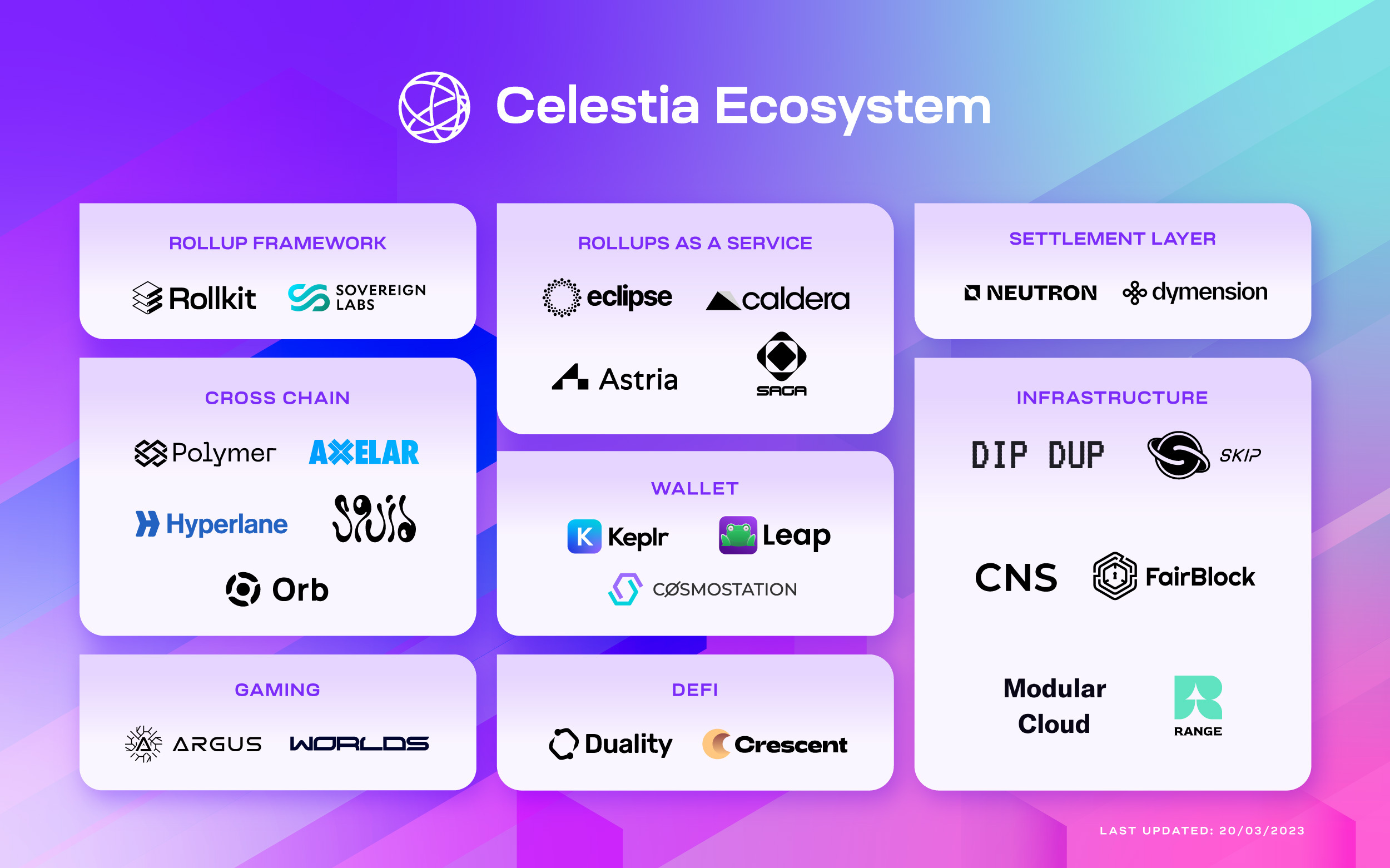In today’s crypto world, there are a ton of ways to make money. You can trade anything from altcoins to NFTs. You could dabble in derivatives, futures, and options. On top of that, you could stake your altcoins for a nice yearly return. Or you could deposit your altcoins as collateral or liquidity for similar returns.
You could even earn tokens through gaming or airdrops! However, we’re not discussing any of the above today. Instead, we’ll introduce to you a lesser-known way of making money in crypto. And that is to earn crypto by setting up your node.
So, if you’re interested to earn crypto by setting up your node, stick around! We’ll be highlighting a few projects which’re promising. But, before we begin, let us explain to you what a node is.
What Is a Node?
A node in the crypto sense means a computer that’s part of a blockchain network. In a nutshell, a node can receive, send and produce data. Within the network, it keeps track of the state of the blockchain. On top of that, it confirms that each block produced by the blockchain is legitimate.
Usually, a blockchain node owner is deemed a stakeholder in the project. This is because by running a node, you’re part of a group that enables the network to function. In turn, owning nodes that help to enable said network could prove profitable. Since each node receives rewards in the form of the project’s native token.
Now, let’s get back on track. Today, we’ll be looking at seven of such promising blockchain projects. These are highlighted in the Twitter thread here. We’ve looked at these projects based on ease of set-up and potential profit. It’ll be good to earn crypto setting up your node on these projects.
Node #1 – Starknet
Starknet is a Layer-2 (L2) scaling solution. Built on Ethereum, it aims to scale using Zero Knowledge (ZK)-Rollup technology. Its creator, Starkware, has raised over $165 million from Venture Capitalists (VCs). These VCs include Dragonfly Capital, Paradigm, ConsenSys, and more.
To set up a node on Starknet, you only have to follow a few simple steps. In a nutshell, all you have to do is to:
- Set up a Virtual Private Server (VPS). Do note that you’ve got to spend about $24 per month to maintain this.
- Get your HTTPS key from Alchemy.
- Download and install PuTTY.
- Input your HTTPS key and the script here into PuTTY.
For a detailed step-by-step visual guide on the above, check out the Twitter thread below.
Ready to earn a $15,000+ $STARK airdrop? 🪂
How? Run a Starknet node. Aptos node operators have already cashed in – now it’s your turn 💰
Cost: $20
Potential gain: $15-20KHere’s how to set up your node in just a few simple steps 👇🧵: pic.twitter.com/30ILnxytl1
— ardizor 🧙♂️ (@ardizor) April 5, 2023
Node #2 – Shardeum
The next great project to earn crypto setting up your node on is Shardeum. Shardeum is a Layer-1 (L1) blockchain that uses sharding to scale. It’s also decentralized and Ethereum Virtual Machine (EVM)-compatible. Currently, it seems that Shardeum might be airdropping their $SHM token. If that plays out, it’ll likely gain momentum.
To avoid missing this train, you could decide to run a Shardeum node. For this, you need to:
- Set up and order a VPS server.
- Download and install PuTTY.
- Copy and paste some command lines into PuTTY.
- Install the Docker and Validator.
- Use the Dashboard to start your node and stake $SHM tokens.
To complete the above steps, refer to this Twitter thread here. It’ll bring you through the steps with visual guides and information.
Shardeum airdrop could be the next Arbitrum🪂
Run a node and watch the rewards roll in. Don’t miss out on this opportunity to turn $20 into $10K💰
Follow this quick guide to set up your node now 👇🧵 pic.twitter.com/C9tND8XXJY
— Rekt Fencer (@rektfencer) June 5, 2023
Node #3 – Celestia
Celestia is our third entry on this list. As a modular chain, it separates data and its processing into different chains. This improves its scalability as transactions clear faster. Already, Celestia has built a strong ecosystem. Also, it has plans to introduce GameFi to its blockchain. All in all, Celestia is making the right moves to be successful in the near future.

To ensure you’re not left out, consider running a Celestia node. Below are some steps you can follow in order to do so:
- Set up a VPS server.
- Download and install PuTTY.
- Copy and paste a few command lines into PuTTY to execute.
- Initialize your light node.
For the exact steps to set up a Celestia node, refer to the Twitter thread here.
Wanna earn over $10,000 with a $TIA airdrop? 🪂
Run a Celestia node! Aptos operators have already made bank – it’s your turn to cash in 💰
Cost: FREE!
Potential gain: $10-15K!Ready to set up your node? Follow these simple steps 👇🧵: pic.twitter.com/1ph8KnWLtQ
— ardizor 🧙♂️ (@ardizor) April 10, 2023
Node #4 – Base
Base is a new Ethereum L2 from Coinbase. Its focus is on improving the developer experience and enabling low-cost transactions. Its technology is built using Optimism. Currently, its ecosystem and list of partners are huge and continuously growing.
With a large backer like Coinbase, you can be sure many are looking to run their nodes on Base. To do so, follow the simple steps below:
- Set up and order a VPS server.
- Download and install PuTTY.
- Copy and paste a few command lines into PuTTY to execute.
For the command lines to copy over to PuTTY, refer to the Twitter thread here.
Solana node runners got airdrops worth millions of dollars.
Base could be next.
Ready to set up your Base Node and potentially get a huge airdrop?
Follow my simple step-by-step guide on how to do it 👇🧵 pic.twitter.com/InIzGgH5Mq
— Rekt Fencer (@rektfencer) June 6, 2023
Node #5 – Massa
Another good project to earn crypto setting up your node on is Massa. Massa is a developed L1 blockchain. It can achieve a top Transactions Per Second (TPS) of over 10,000. On top of that, it’s got over 1,000 nodes on its network running. In turn, this improves the decentralization of the project.
To run a node on Massa, simply follow the steps below:
- Set up a Virtual Private Server (VPS). Do note that you’ve got to spend about $24 per month to maintain this.
- Download and install PuTTY.
- Copy, paste, and execute some command lines.
- Register your node on Discord.
There are quite a few command lines to execute in Step 3. For information on these, take a look at the Twitter thread here.
Want to earn over $5K with minimal effort?
Become a MASSA node operator – it’s simple.
Cost: $20
Potential gain: $5-7kReady to join the party? Follow these steps and start running your own node now 👇🧵: pic.twitter.com/nmXSVeynwE
— ardizor 🧙♂️ (@ardizor) April 20, 2023
Node #6 – Taiko
Taiko is an EVM-compatible, ZK-Rollup L2 project backed by Loopring. As of now, the network has over 2,000 nodes proposing blocks already! To prevent yourself from missing out, set up a node with the following steps:
- Set up a VPS server. Do note that for this guide, you’ll need a $56/month plan.
- Download and install PuTTY.
- Copy, paste, and execute some command lines.
- Get some Sepolia $ETH and set up your own Remote Procedure Call (RPC).
- Restart to update your node.
For a detailed step-by-step guide, refer to the Twitter thread here.
Ready for a $10K+ Taiko airdrop? 🪂
It’s easy! All you need to do is run your own node. Operators on Aptos have already got their share, and now it’s YOUR turn to cash in 💰
Cost: FREE
Potential gain: $10.000Follow these simple steps to set up your own node 👇🧵: pic.twitter.com/hSonAg4sA2
— ardizor 🧙♂️ (@ardizor) April 8, 2023
Node #7 – Penumbra
Our last solid project to earn crypto setting up your node is Penumbra. Penumbra specializes in private crypto trading. Its focus is on Decentralized Finance (DeFi), all while maintaining privacy and cross-chain capabilities. Penumbra is also built on the Cosmos ecosystem. For a Penumbra node, all you need to do is to:
- Set up and order a VPS server.
- Download and install PuTTY.
- Copy, paste, and execute some command lines.
- Install Rust and install your node.
- Build some binary files and generate your wallet.
- Receive some tokens from the faucet and delegate them.
For a visual guide, use the information from the Twitter thread here.
Want to earn $5K+ worth of airdrop?
It’s easy: just run a Penumbra node.
Don’t miss out on this chance to earn big. Read this step-by-step guide on setting up a Penumbra node 👇🧵 pic.twitter.com/tomIGGzwv2
— Rekt Fencer (@rektfencer) June 8, 2023
Conclusion
Voila! That’s a list of great projects to earn crypto setting up your node in. So, get your techie fingers ready! It’s time to set up some money-making nodes.
⬆️ For more cryptocurrency news, check out the Altcoin Buzz YouTube channel.
⬆️ Our popular Altcoin Buzz Access group generates tons of alpha for our subscribers. And for a limited time, it’s Free. Click the link and join the conversation today.




























